Table of Contents
Are you interested in Cross-Platform App Development?
Well, in the world full of iOS apps and Android Apps, it can get quite confusing. At one hand you have highest revenue generating app store and on the other, world’s most used platform.
But what if you want to the best of both worlds? That’s why cross platform apps come in.
Therefore, if you are someone who wants to develop a mobile app and want to explore cross platform application development as an option, this blog is for you.
Here, we shall be discussing all you need to know about cross-platform app development. Let’s start with introduction.
Introduction To Cross Platform App Development

Cross platform app development has revolutionized the way mobile applications are created.
With the increasing demand for apps on multiple platforms, app developers are seeking efficient ways to build applications that can run seamlessly across various operating systems.
Moving on, Cross platform app development involves using frameworks and tools that allow developers to write code once and deploy it across multiple platforms, such as iOS, Android, and even web browsers.
This approach eliminates the need to develop separate applications for each platform, saving time, effort, and resources.
Moving on, let’s compare cross-platform of our much loved native and hybrid options in the section below:
Cross Platform App Development vs Native App Development
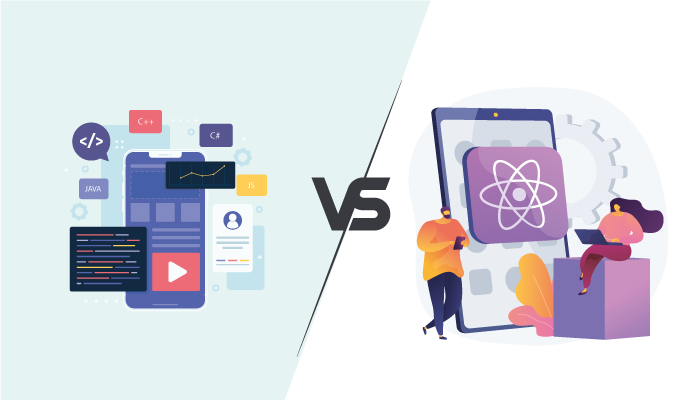
Should you choose Cross-platform over android app development or iOS app development? Well, native app development is an alluring choice.
However, cross-platform option has it’s own benefits. Let’s see how both of these compare.
| Cross-Platform App Development | Native App Development | |
| Approach | Write code once and deploy on multiple platforms. | Develop separate apps for each platform. |
| Frameworks | React Native, Flutter, Xamarin, Ionic, and more. | Platform-specific languages and tools (Swift, Java, etc.) |
| Code Reusability | Significant code reuse across multiple platforms. | Platform-specific code for each platform. |
| Audience Reach | Target multiple platforms simultaneously. | Limited to the specific platform being developed for. |
| Cost-effectiveness | Single codebase reduces development and maintenance costs. | Separate development teams may increase costs. |
| Platform Features | May have limitations in accessing platform-specific features. | Full access to platform-specific features and APIs. |
| Performance | Native-like performance with proper optimization. | Maximum performance and responsiveness. |
| Development Time | Faster development cycles due to code reusability. | Longer development time for each platform. |
| User Experience | Good user experience with UI components of the framework. | Rich and immersive user experience using native features. |
| Ideal for | Business apps, general-purpose apps with shared features. | Apps heavily reliant on platform-specific features. |
Cross Platform App Development vs Hybrid App Development
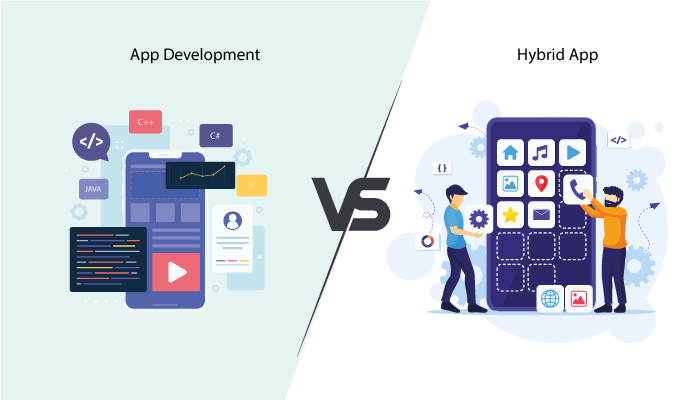
Did you know cross platform and Hybrid App Development are two different things? Well, let’s see how both of these are two entirely different things.
| Cross-Platform App Development | Hybrid App Development | |
| Approach | Write code once and deploy on multiple platforms. | Develop a single app using web technologies. |
| Technologies | React Native, Flutter, Xamarin, Ionic, and more. | HTML, CSS, JavaScript frameworks (e.g., Cordova, PhoneGap) |
| Code Reusability | Significant code reuse across multiple platforms. | Codebase can be reused to an extent, but not entirely. |
| Performance | Native-like performance with proper optimization. | Generally slower performance due to web-based rendering. |
| User Experience | Good user experience with UI components of the framework. | User experience can be less polished compared to native. |
| Access to Features | Access to most platform-specific features and APIs. | Limited access to platform-specific features and APIs. |
| Development Time | Faster development cycles due to code reusability. | Faster development time compared to native app development. |
| Deployment Flexibility | Deployable on multiple platforms with minimal changes. | Requires packaging as a web app or native wrapper. |
| Offline Capabilities | Limited offline capabilities depending on framework support. | Offline capabilities can be implemented using web caching. |
| Maintenance | Easier maintenance due to shared codebase. | Requires separate updates for web and native components. |
| Ideal for | Business apps, general-purpose apps with shared features. | Simple apps, content-based apps, and prototypes. |
Popular Cross Platform Apps
There are a lot of people who don’t put much faith in cross-platform app development. However, some of the largest platforms that we all love and use today are built on this platform.
So, let’s look at the example of cross platform apps below:
Trello
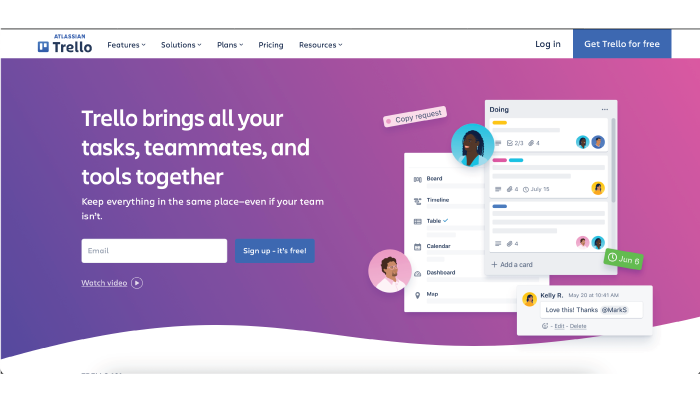
Trello revolutionizes project management with its intuitive and visually appealing interface.
Developed using cross-platform frameworks like React Native, Trello allows users to organize tasks, collaborate with teams, and track progress seamlessly across iOS and Android devices.
Duolingo

Duolingo gamifies language learning, making it fun and addictive for millions of users worldwide.
This cross-platform app, built using Flutter, offers interactive lessons, personalized feedback, and progress tracking on both iOS and Android platforms.
Also it is amazing example of app gamification, making a must for case studies.
Strava
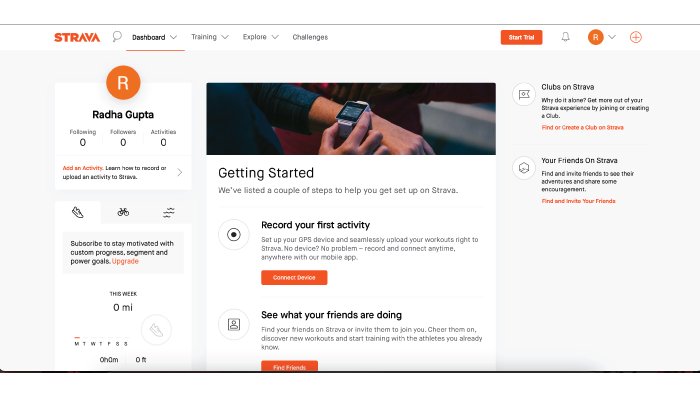
Strava, a favorite among fitness enthusiasts, combines social networking with GPS tracking.
Developed using cross-platform tools like React Native, Strava lets users record workouts, compete with friends, and explore new routes for running and cycling on various platforms.
Adobe Photoshop Express
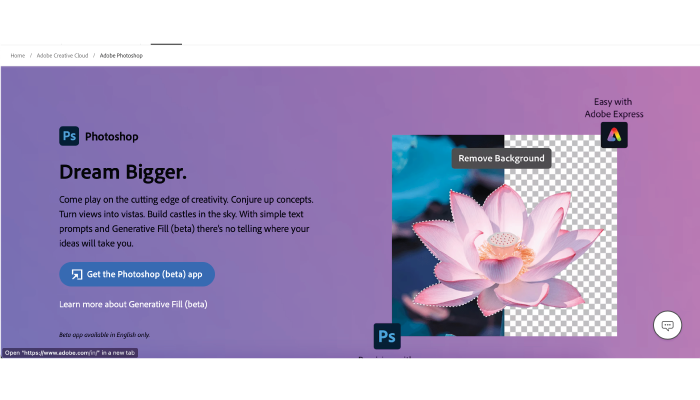
Adobe brings the power of professional photo editing to mobile devices with Photoshop Express.
This cross-platform app, crafted using Xamarin, provides essential editing tools, filters, and effects, enabling users to enhance their photos seamlessly on iOS and Android.
Shazam
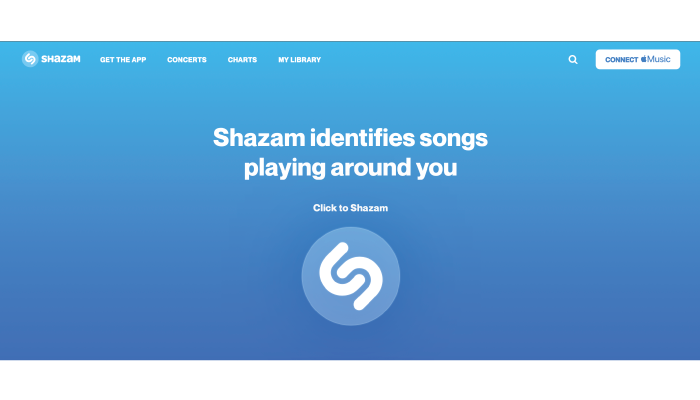
Shazam revolutionized the music discovery experience by identifying songs in seconds.
Built using cross-platform frameworks, Shazam allows users to quickly recognize and explore music across different platforms, transforming their devices into powerful music companions.
Reasons to Choose Cross Platform App Development

So, why should you choose cross platform app development?
This is an important question that everyone wants an answer to. Well, there are rather good reasons to do so.
Let’s look at some amazing reasons to choose cross-platform app development for your next project:
Cost-effectiveness
Cross platform app development allows businesses to save costs by utilizing a single codebase for multiple platforms.
This eliminates the need for separate development teams and reduces maintenance expenses.
Faster time to market
With Cross platform app development, developers can write code once and deploy it across multiple platforms.
Moreover, this significantly reduces development time and enables faster time to market, giving businesses a competitive edge.
Code reusability
Cross-platform frameworks promote code reusability, allowing developers to write code that can be shared across different platforms.
Not only this saves time but also ensures consistency in functionality and user experience.
Wider audience reach
By targeting multiple platforms, businesses can reach a larger audience and increase their app’s potential user base.
Consequently, opening up opportunities for greater market penetration and increased user engagement.
Simplified maintenance
Maintaining a single codebase is easier and more efficient than maintaining separate codebases for different platforms.
In addition, updates and bug fixes can be applied to the shared codebase, streamlining the maintenance process.
Access to plugins and APIs
Cross-platform frameworks provide access to a wide range of plugins and APIs, allowing app developers to leverage platform-specific features and device capabilities.
This enables the development of robust and feature-rich applications.
Consistent user experience
Cross-platform frameworks often provide pre-built UI components and design elements that ensure a consistent user experience across platforms. And helps maintain brand identity and user satisfaction.
Easier team collaboration
Cross platform app development fosters collaboration among development teams by using a shared codebase.
Cross Platform App Developers can work together more seamlessly, share knowledge, and contribute to the app’s development.
Flexibility and scalability
Cross-platform frameworks offer flexibility and scalability, allowing apps to adapt to evolving business needs and accommodate future platform updates and advancements.
Community and ecosystem support
Popular cross-platform frameworks have vibrant communities and extensive ecosystems of libraries, tools, and resources.
This support network provides access to guidance, documentation, and community-driven solutions, making development smoother.
Now that you have enough reason to choose cross platform app development, it’s time to see WHEN you should do it in the section below.
When You Should Choose Cross Platform App Development?
WHEN should you choose cross platform option for your mobile app development project? Let’s answer the very same question below:
Limited budget
If you have budget constraints and need to develop apps for multiple platforms, Cross platform app development offers a cost-effective solution.
Building a single codebase that can run on multiple platforms reduces development and maintenance costs compared to developing separate native apps.
Time-sensitive projects
Cross platform app development can significantly reduce development time and accelerate time to market.
If you have a tight deadline or need to quickly launch your app on multiple platforms, Cross platform app development allows you to leverage code reusability and streamline the development process.
Simpler app requirements
If your app has relatively straightforward features and doesn’t heavily rely on platform-specific functionalities, Cross platform app development can be a viable option.
Cross-platform frameworks provide a wide range of pre-built components and plugins that can fulfill common app requirements.
Consistent user experience
If maintaining a consistent user experience across platforms is a priority, Cross platform app development can be beneficial.
Using a single codebase ensures that the app’s look and feel, as well as its core functionalities, remain consistent across different platforms.
Rapid prototyping
Cross platform app development can be a valuable choice for quickly building prototypes or Minimum Viable Products (MVPs).
It allows you to validate your app idea across multiple platforms and gather user feedback before investing in native development.
Non-complex, content-based apps
Cross platform app development is well-suited for apps that primarily focus on delivering content, such as news apps, blog readers, or information-based apps.
These apps typically don’t require complex interactions or platform-specific features and can benefit from the efficiency of Cross platform app development.
Limited platform-specific features
If your app does not heavily rely on platform-specific features or if suitable cross-platform plugins are available to access those features, Cross platform app development can be a practical choice.
However, it’s crucial to assess whether the desired functionality can be adequately achieved within the cross-platform framework.
And with this out of the way, it’s time to discuss the cross platform app development process in the section below.
Cross Platform App Development Process
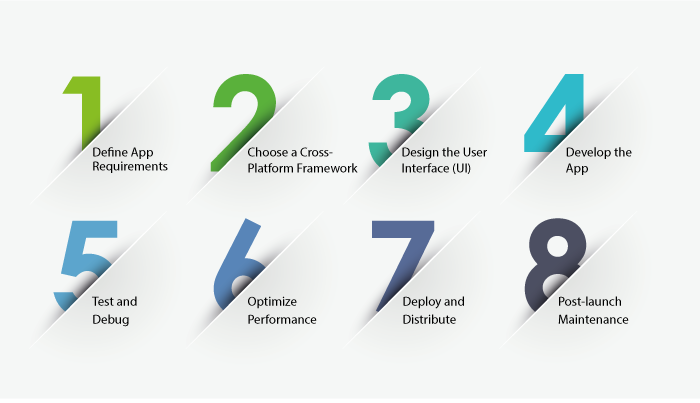
Developing a cross-platform app can be a little different from native or hybrid app development.
But that’s not something that you need to worry about as we shall be discussing all you need to know about that in this section of the blog.
Therefore, with this being said, let’ get right into it:
1. Define App Requirements
Clearly define the app’s purpose, target audience, features, and functionality.
Determine the platforms you want to target (e.g., iOS, Android, web).
2. Choose a Cross-Platform Framework
Select a suitable cross-platform framework based on your project requirements, such as React Native, Flutter, Xamarin, Ionic, or others.
Consider factors like programming language familiarity, community support, and the framework’s capabilities.
3. Design the User Interface (UI)
Create wireframes and design the app’s user interface.
Ensure a consistent design across platforms while adhering to each platform’s specific design guidelines (Material Design for Android, Human Interface Guidelines for iOS, etc.).
4. Develop the App
Write the app’s code using the chosen cross-platform framework.
Utilize the framework’s features and libraries to implement the desired functionality, user interactions, and business logic.
Moreover, leverage platform-specific plugins or custom native code for any required platform-specific features.
5. Test and Debug
Conduct thorough testing to identify and fix bugs, ensure proper functionality, and validate user experience across different platforms.
Perform unit testing, integration testing, and usability testing to address any issues and ensure a seamless app experience.
6. Optimize Performance
Optimize the app’s performance by leveraging the framework’s performance optimization techniques, utilizing code splitting, implementing lazy loading, and optimizing resource usage.
Monitor and fine-tune performance to deliver a smooth user experience.
7. Deploy and Distribute
Prepare the app for deployment by creating app store accounts (e.g., Apple App Store, Google Play Store).
Generate platform-specific app packages (APK for Android, IPA for iOS) and follow the submission guidelines for each platform.
Moreover, you should consider using app distribution platforms like Firebase App Distribution or Microsoft App Center for easier distribution and updates.
8. Post-launch Maintenance
Lastly, monitor user feedback, address bug reports, and release updates to improve the app’s functionality and address any issues.
Regularly maintain and update the app to ensure compatibility with platform updates, security patches, and new device releases.
Popular Cross Platform App Development Frameworks
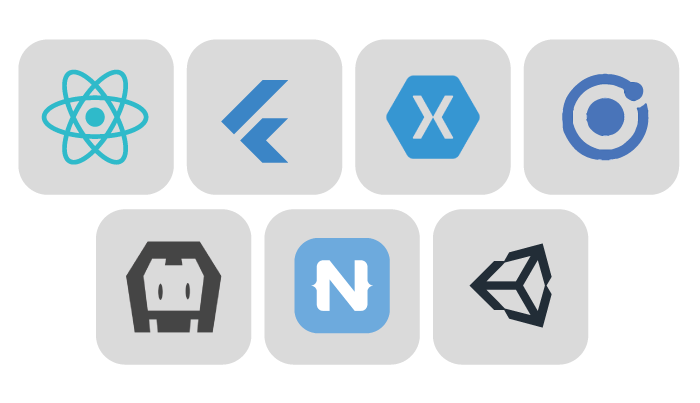
Now that you know how to develop a cross platform app, it’s time to discuss the look at cross platform app development frameworks.
Therefore, let’s get right into it:
· React Native
Developed by Facebook, React Native allows developers to build native-like apps using JavaScript and React.
It has a large and active community, a vast ecosystem of libraries, and provides excellent performance and UI responsiveness.
· Flutter
Developed by Google, Flutter is an open-source UI toolkit for building natively compiled apps for mobile, web, and desktop from a single codebase.
It uses the Dart programming language and offers a rich set of pre-built UI components.
· Xamarin
Owned by Microsoft, Xamarin allows developers to build native apps using C# and .NET.
It provides access to platform-specific APIs and has extensive support for building apps across iOS, Android, and Windows.
· Ionic
Built on top of web technologies like HTML, CSS, and JavaScript, Ionic enables developers to create cross-platform mobile apps with a native look and feel.
It leverages popular frameworks like Angular or React for building feature-rich applications.
· PhoneGap/Cordova
Apache Cordova (formerly PhoneGap) is an open-source framework that allows developers to build mobile apps using HTML, CSS, and JavaScript.
It provides a bridge to access device features through JavaScript APIs.
· NativeScript
NativeScript enables developers to build truly native mobile apps using JavaScript, TypeScript, or Angular.
It offers direct access to native APIs, supports a wide range of plugins, and has a strong developer community.
· Unity
While primarily known for game development, Unity can also be used for cross-platform app development.
It allows app developers to build interactive and visually appealing apps using C# or UnityScript.
Cost To Develop A Cross Platform App
The cost to develop a cross-platform app can vary significantly based on several factors.
This includes the complexity of the app, the desired features and functionality, the chosen cross-platform framework, the development team’s rates, and the geographical location of the development team.
Here are some cost considerations:
- App Complexity
- Design and User Interface
- Platform and Device Support
- Cross-Platform Framework
- Backend Development
- Team Rates and Location
In any case, the cost ranges from $15,000 to $50,000.
For more details on the specific cost of your project, it’s highly recommended that you consult a development company like WeAppIt Right.
Conclusion
This is all you need to know about cross platform app development including reason to choose it and how you can make most out of it. And with this out of the way, we conclude the blog.
FAQ
Cross platform app development is the process of creating mobile applications that can run on multiple operating systems, such as iOS and Android, using a single codebase. It allows developers to write code once and deploy it across different platforms.
Some popular frameworks for Cross platform app development are React Native, Flutter, Xamarin, and Ionic. These frameworks provide tools and libraries to build apps that can run on multiple platforms using a shared codebase.
Cross platform app development offers benefits like code reusability, faster development cycles, cost-effectiveness, and wider audience reach. It allows developers to save time and effort by writing code that works across multiple platforms, reducing development and maintenance costs.
While Cross platform app development is highly efficient, it may have limitations in terms of platform-specific features, performance optimization, and access to certain native APIs. These limitations can be mitigated by utilizing platform-specific plugins or writing custom native code if necessary.
Yes, modern cross-platform frameworks like Flutter and React Native offer native-like performance by using native components and leveraging hardware acceleration. With proper optimization and coding practices, cross-platform apps can provide a smooth user experience comparable to native applications.
Yes, cross-platform frameworks provide access to native device features through plugins and APIs. Most frameworks have extensive plugin ecosystems that allow developers to access and utilize device-specific capabilities, such as camera, GPS, notifications, and more.
Cross-platform apps can target multiple platforms, including iOS, Android, Windows, macOS, and even web browsers. With the right framework and tooling, developers can deploy their apps to a wide range of platforms, maximizing their potential user base.
Maintaining cross-platform apps can be easier than maintaining separate native apps for different platforms. Since most of the code is shared, updates and bug fixes can be applied to the shared codebase, reducing the effort required for platform-specific maintenance.
Yes, it is possible to convert existing native apps into cross-platform apps. However, it may require significant modifications to the codebase and UI to adapt it to the chosen cross-platform framework. The level of effort involved depends on the complexity and architecture of the existing app.
Cross platform app development is suitable for a wide range of apps, including business apps, e-commerce apps, social media apps, and more. However, for apps that heavily rely on platform-specific features or require maximum performance, native development might be a better choice.





No Comments
Comments are closed.